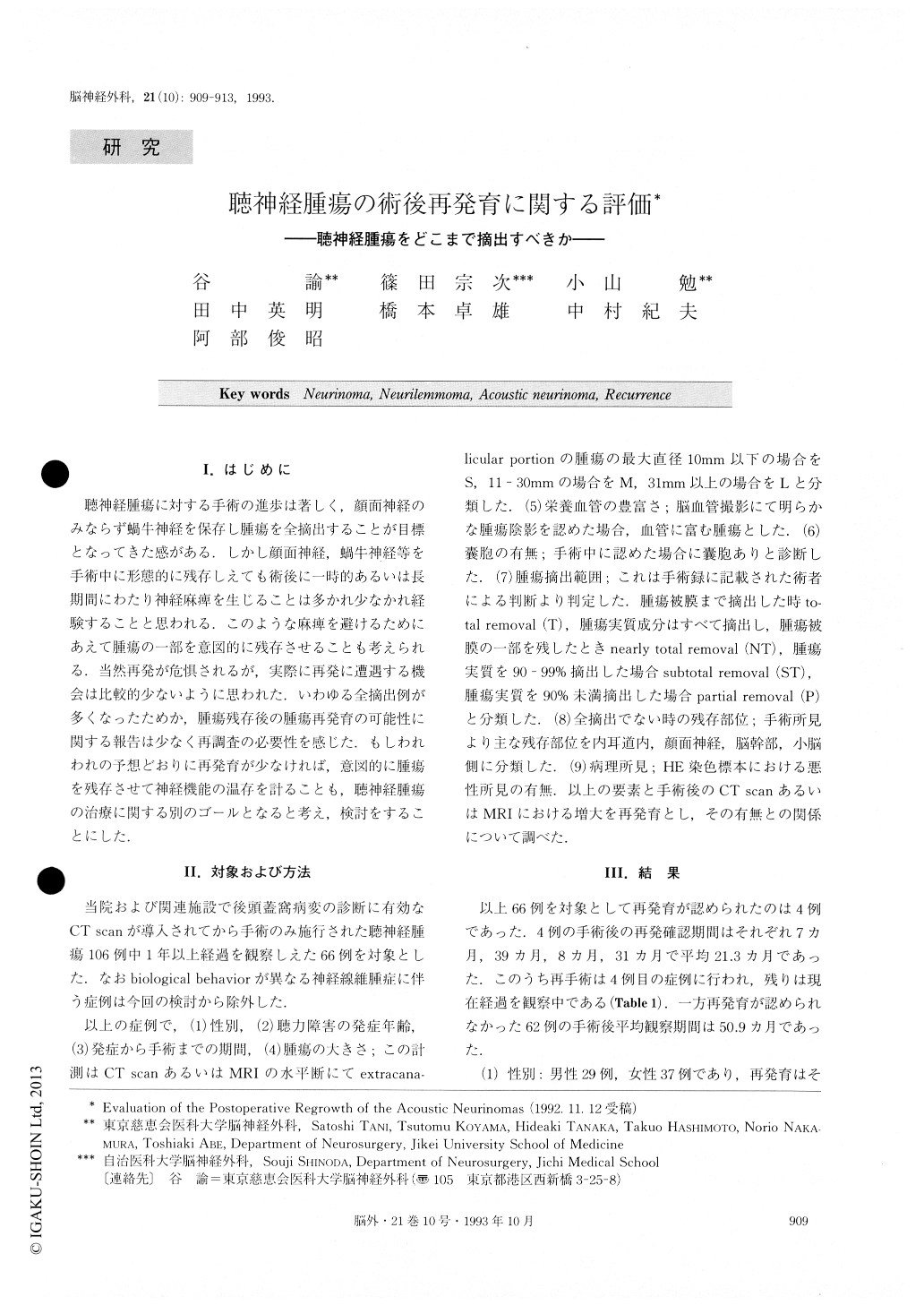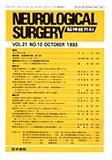Japanese
English
- 有料閲覧
- Abstract 文献概要
- 1ページ目 Look Inside
I.はじめに
聴神経腫瘍に対する手術の進歩は著しく,顔面神経のみならず蝸牛神経を保存し腫瘍を全摘出することが目標となってきた感がある.しかし顔面神経,蝸牛神経等を手術中に形態的に残存しえても術後に一時的あるいは長期間にわたり神経麻痺を生じることは多かれ少なかれ経験することと思われる.このような麻痺を避けるためにあえて腫瘍の一部を意図的に残存させることも考えられる.当然再発が危惧されるが,実際に再発に遭遇する機会は比較的少ないように思われた.いわゆる全摘出例が多くなったためか,腫瘍残存後の腫瘍再発育の可能性に関する報告は少なく再調査の必要性を感じた.もしわれわれの予想どおりに再発育が少なければ,意図的に腫瘍を残存させて神経機能の温存を計ることも,聴神経腫瘍の治療に関する別のゴールとなると考え,検討をすることにした.
Although recent advances in microsurgical removal of acoustic neurinomas has made it possible to preserve, morphologically, the cochlear nerve as well as the facial nerve, functional impairment of the facial nerve is often encountered following total removal of the tumor. In order to avoid such functional morbidity, a surgical pro-cedure can be proposed in which the tumoral capsule attached to a functional structure such as the facial nerve is intentionally left. Along with this surgical procedure and postoperative course observation, postoperative re-growth of the tumor should be precisely evaluated. A few recent reports about this problem have been pub-lished since CT scan and MRI have become available. The authors reviewed 66 cases in which postoperative evaluation by high resolution CT scan of the acoustic neurinomas has been carried out in their department more than one year after surgery. Multiple factors such as age at onset, sex, preoperative period, tumor size, vas-cularity, extent of the tumor removal, residual site, and pathological findings on HE stain were studied in rela-tion to the tumor regrowth. Four cases showed regrowth of the tumor, and one of these tumors was reoperated on. The percentage of regrowth was 7.5% among the tumors which were not totally removed. No significant risk fac-tors for tumor regrowth were noticed in these cases, but tumor regrowth tended to be found in younger patients. The residual tumors which showed regrowth were al-ways located in the internal auditory meatus.
In this study, it is apparent that, percentagewise, tumor regrowth is not so prevalent. From a surgical point of view, it can be thought that vascular interruption of blood flow to the tumor from the vertebro-basilar artery inhibits tumor growth. Tumor regrowth may be related to vascular supply from the branches of the external carotid artery as well as from the patient's vertebro-basilar artery. The authors propose the surgical procedure men-tioned above, because, from the results of this study, it is shown that therapy for acoustic neurinoma can also be extended to the functional preservation of the facial nerve.
Watchful waiting or mastocell stabilization therapy as conservative treatment, reoperation through the previous suboccipital bone window or by the translabyrinthine approach, or stereotactic radiation treatment were advo-cated as the options for treating the regrowing tumor.

Copyright © 1993, Igaku-Shoin Ltd. All rights reserved.


